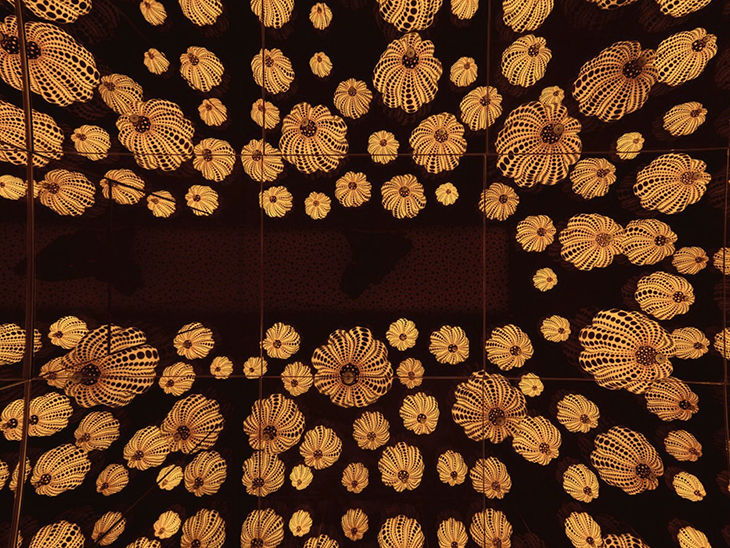Yayoi Kusama, “Return to Infinity”
- Democracy Chain

- Sep 22
- 3 min read
by John Zotos
Dallas Museum of Art, Dallas, Texas
Continuing through January 18, 2026

For well over seven decades Yayoi Kusama (b. 1929) has reinvented herself time and again. Up to the present day Kusama has engaged with major currents in post-war art that range from painting, cinema, fashion, performance art and sculpture, to the fabrication of hermetic installations aimed at a totality of vision. The centerpiece of this exhibition is an installation titled “All the Eternal Love I Have for the Pumpkins,” one of her perception-challenging infinity rooms lined floor to ceiling with mirrors that activate whatever she chooses to place within the space. Of course, she understands one thing from the beginning: the conceit that completes the work always remains with the viewer, who must step inside to activate it.

The exhibition includes a timeline outlining Kusama’s career, along with archival documentary photography that forms an overview of her varied artistic practice, complete with milestones in time that augment our total experience. Dated 2016, “All the Eternal Love I Have for Pumpkins” piece entered the collection of the Dallas Museum of Art the following year, and is the only pumpkin themed mirror room in a North American museum.
Kusama’s first Infinity Mirror Room, “Phalli’s Field,” debuted in 1965 during a seminal moment where she expanded upon her performance-based practices through engagement with perceptual experience itself. This, combined with her investigation of the pumpkin motif in the late 70’s, ideally inform the design of the infinity room on view here. For Kusama, pumpkins are a psychic regression related to feelings of comfort experienced as a child during the war. They reference fields of kabocha pumpkins in Japan that the artist believes radiate calm, serenity, and a spiritual infinitude. Over the years they have also assumed a status in her work akin to a self-portrait.

Each of the over seven hundred acrylic pumpkins inside the room is painted yellow and adorned with black polka dots. Not only do they reference her early abstract paintings, the dots underscore her obsession with pattern and repetition as something meditative and soothing. The infinity room amplifies this quality with the mirrors that line every square inch of the box-like interior of the piece, propelling the imagery into a limitless space with no hint of a vanishing point.

From the outside, the room is a white cube, around the size of a small storage shed, with a single door on one of the sides. There’s only room for two people at a time, plus a museum attendant wedged in as an annoying security measure. Upon entering the space one walks into a rectangular pathway that reaches the center of the room such that a horseshoe surrounds it. Reminiscent of a stage proscenium, this is the area occupied by the pumpkins. Here one becomes a lone observer taking in Kusama’s visual pleasure show like a kaleidoscopic head-trip.
This piece is unusual in the artist’s oeuvre. Most of her other infinity rooms are larger in scale so as to allow us to walk around freely. Sometimes these other pieces feature an exit at the other end, so the flow operates on both an interactive and kinetic register. However stimulating this may sound, the experience inside the room is still and calm, and one comes away with the wonder and joy of an astronomer who has just found a new galaxy.

John Zotos is an art critic and essayist based in Dallas.




Comments